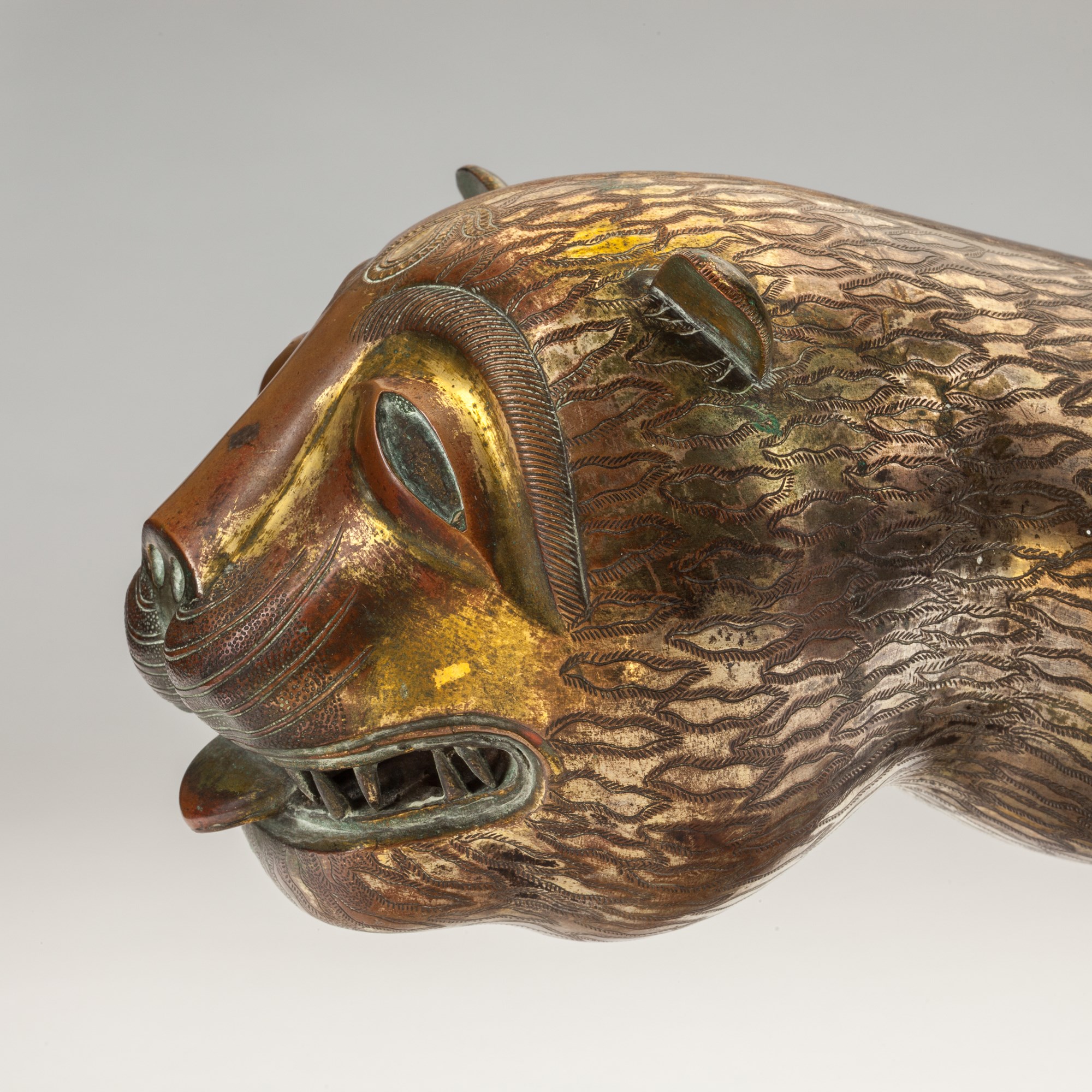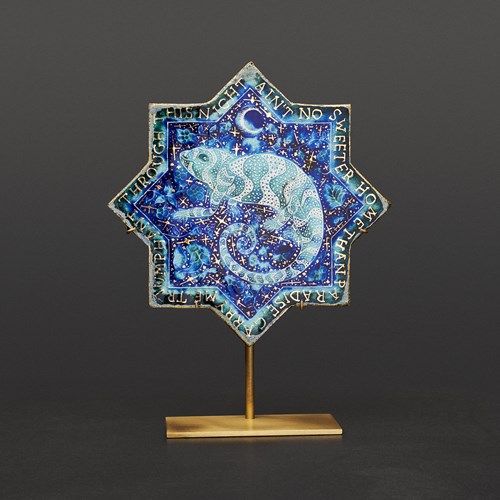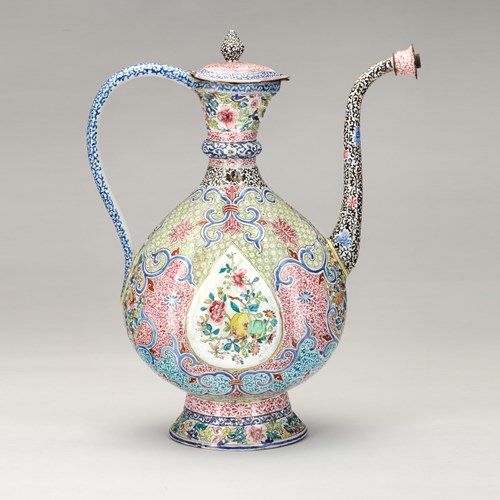Marketplace
Tiger Palanquin Ornament
Tiger Palanquin Ornament
Date 18th century
Period 1600-1750, 1750-1850, 18th century
Origin India
Medium Gilt-copper
Dimension 20 cm (7⁷/₈ inches)
Kingdom of Mysore
This hollow gilt-copper head of a tiger was most probably the finial for an elaborately decorated palanquin. Originally it would have been covered with gilt decoration and the eyes most probably inlaid with semi-precious stones. On the forehead of the tiger, there appears a boteh motif. The tiger has its mouth slightly open with its tongue protruding through ferocious teeth. Many members of Indian royalty used tigers as a symbol of power and the iconography of tigers appears on many royal objects. The most prolific iconographic depiction of tigers was by the court of Tipu Sultan (1750-1799), also referred to as The Tiger of Mysore. He used the tiger emblem on his weaponry and royal regalia including his throne. There are distinct similarities between the tiger motif used in Srirangapatna and this tiger head - including the depiction of the tiger’s facial features and the bubri motif engraved on its body.
Stock no.: A4452
This hollow gilt-copper head of a tiger was most probably the finial for an elaborately decorated palanquin. Originally it would have been covered with gilt decoration and the eyes most probably inlaid with semi-precious stones. On the forehead of the tiger, there appears a boteh motif. The tiger has its mouth slightly open with its tongue protruding through ferocious teeth. Many members of Indian royalty used tigers as a symbol of power and the iconography of tigers appears on many royal objects. The most prolific iconographic depiction of tigers was by the court of Tipu Sultan (1750-1799), also referred to as The Tiger of Mysore. He used the tiger emblem on his weaponry and royal regalia including his throne. There are distinct similarities between the tiger motif used in Srirangapatna and this tiger head - including the depiction of the tiger’s facial features and the bubri motif engraved on its body.
Stock no.: A4452
Date: 18th century
Period: 1600-1750, 1750-1850, 18th century
Origin: India
Medium: Gilt-copper
Dimension: 20 cm (7⁷/₈ inches)
More artworks from the Gallery




 Silver Web_T638206163549784171.JPG?width=500&height=500&mode=pad&scale=both&qlt=90&format=jpg)

_T638772015617641557.jpg?width=500&height=500&mode=pad&scale=both&qlt=90&format=jpg)


